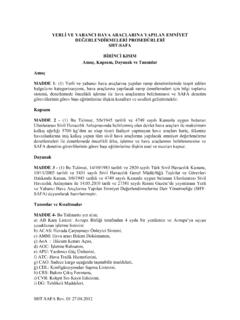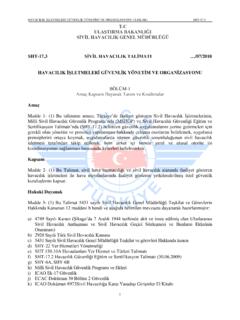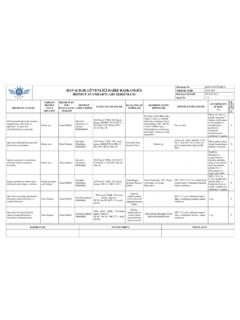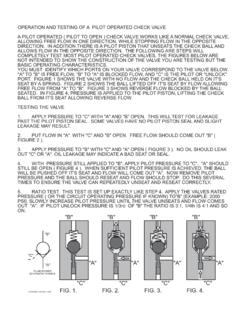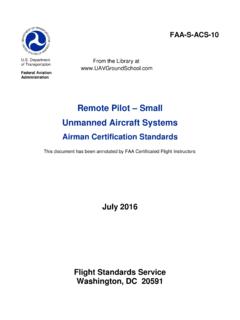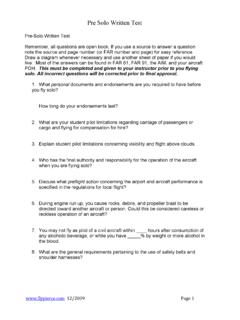Transcription of T.C. ULAŞTIRMA BAKANLIĞI ATPL / Çok Pilot Tip …
1 ULA TIRMA BAKANLI I ATPL / ok Pilot Tip Yetkisi Yetenek Testi ve Yeterlilik Kontrol Sonu Formu Sivil Havac l k Genel M d rl ATPL / MPA Type Rating Skill Test and Proficiency Check Report Form DGCA TURKEY Print Applicant Pilot 's Personal Details Name, Surname : Commander Co- Pilot Licence Type & Number : Aircraft Type : Application Concerns : Initial Type Rating Revalidation Renewal Initial ATPL(A) Date : MANEOUVRES / PROCEDURES PRACTICAL TRAINING ATPL / MPA TYPE RATING. (Including Multi-Crew Cooperation) (applicable for TR training only) SKILL TEST / PROFICIENCY CHECK. - Refer to page 4 for guidance material - OTD FTD FS A.
2 Instructor Checked in Attempt Examiner Initials (FS or A/C) (1 or 2) Initials Section 1 - Flight Preparation Performance calculation. P. Aeroplane ext. visual inspect.; location of each item and purpose of inspection. [P#] P. Cockpit inspection. P. Use of checklist prior to starting engines, starting procedures, radio and navigation P M. equipment check, selection and setting of navigation and communication frequencies. Taxiing in compliance with air traffic control or instructions of instructor. P . Before take-off checks P M. Section 2 - Take-offs Normal take offs with different flap settings, including expedited take off.
3 P . * Instrument take-off; transition to instrument flight is required during rotation or P . immediately after becoming airborne. Cross wind take-off (A, if practicable). P . Take-off at maximum takeoff mass (actual or simulated maximum take-off mass). P . Take-offs with simulated engine failure P . * Where simulator not available shortly after reaching V2 (see note below). * Between V1 and V2. P X M FS Only Note : In aeroplanes which are not certificated as transport category aeroplanes (JAR/FAR 25) or as commuter category aeroplanes (SFAR 23), the engine failure shall not be simulated until reaching a minimum height of 500 ft above runway end.
4 In aeroplanes having the same performance as a transport category aeroplane regarding take-off mass and density altitude, the instructor may simulate the engine failure shortly after reaching V2 . Rejected take-off at a reasonable speed before reaching V1 . P X M. Section 3 - Flight Manoeuvres & Procedures Turns with and without spoilers. P . Tuck under and Mach buffets after reaching the critical Mach number, and other specific P X FS Only flight characteristics of the aeroplane ( Dutch Roll). (an A/C may not be used for this exercise). Normal operation of systems and controls engineer's panel P.
5 Normal and abnormal operations of following systems. - (a mandatory minimum of 3 items shall be selected from to inclusive) - Engine (if necessary propeller) P . Pressurisation and air-conditioning P . Pitot/static system P . Fuel system P . Electrical system P . Hydraulic system P . Flight control and Trim-system P . Anti- and de-icing system, Glare shield heating P . Autopilot / Flight director P . Stall warning devices or stall avoidance devices, and stability augmentation devices. P . Ground proximity warning system Weather radar, radio altimeter, transponder. P . Radios, navigation equipment, instruments, flight management system.
6 P . Landing gear and brake. P . Slat and flap system P . Auxiliary power unit P . Abnormal and emergency procedures. - (a mandatory minimum of 3 items shall be selected from to inclusive) - Fire drills Engine, APU, cabin, cargo compartment, flight deck, wing and P . electrical fires including evacuation. Smoke control and removal. P . Engine failures, shut-down and restart at a safe height. P . Fuel dumping (simulated) P . Windshear at Take off / landing. P X FS Only Simulated cabin pressure failure/Emergency descent. P . Incapacitation of flight crew member. P . Other emergency procedures as outlined in the appropriate aeroplane Flight Manual.
7 P . ACAS event. P FS Only - Page 1 of 3 - MANEOUVRES / PROCEDURES PRACTICAL TRAINING ATPL / MPA TYPE RATING. (Including Multi-Crew Cooperation) (applicable for TR training only) SKILL TEST / PROFICIENCY CHECK. Instructor Checked in Attempt Examiner - Refer to page 4 for guidance material - OTD FTD FS A. Initials (FS or A/C) (1 or 2) Initial Section 3 - Flight Manoeuvres & Procedures (continued). Steep turns with 45 bank, 180 to 360 left and right. P . Early recognition and counter measures on approaching stall (up to activation of stall warning device) in take-off configuration (flaps in take-off position), in cruising flight P.
8 Configuration and in landing configuration (flaps in landing position, gear extended). Recovery from full stall or after activation of stall warning device in climb, cruise and P X. approach configuration. Instrument flight procedures. * Adherence to departure and arrival routes and ATC instructions. P M. * Holding procedures. P . * Precision approaches downto a a decision height (DH) not less than 60 m (200 ft). * Manually, without flight director. P M, S. * Manually, with flight director. P . * With autopilot. P . * Manually, with one engine simulated inoperative; engine failure has to be simulated during final approach from before passing the outer marker (OM).
9 P M. until touchdown or through the complete missed approach procedure. (see note 2 below). Note : In aeroplanes which are not certificated as transport category aeroplanes (JAR/FAR 25) or as commuter category aeroplanes (SFAR 23), the approach with simulated engine failure and the ensuing go-around shall be initiated in conjunction with the non-precision approach as described in The go-around shall be initiated when reaching the published obstacle clearance height (OCH/A), however, not later than reaching a minimum descent height/altitude (MDH/A) of 500 ft above runway threshold elevation. In aeroplanes having the same performance as a transport category aeroplane regarding takeoff mass and density altitude, the instructor may simulate the engine failure in accordance with * NDB or VOC/LOC-approach down to the MDH/A P M.
10 Circling approach under following conditions: (a) * approach to the authorised minimum circling approach altitude at the aerodrome in question in accordance with the local instrument approach facilities in simulated instrument flight conditions;. followed by: P . (b) circling approach to another runway at least 90 off centreline from final approach used in item a), at the authorised minimum circling approach altitude;. Remark : if a) and b) are not possible due to ATC reasons a simulated low visibility pattern, may be performed. Section 4 - Missed Approach Procedures Go-around with all engines operating* after an ILS approach on reaching decision height.
